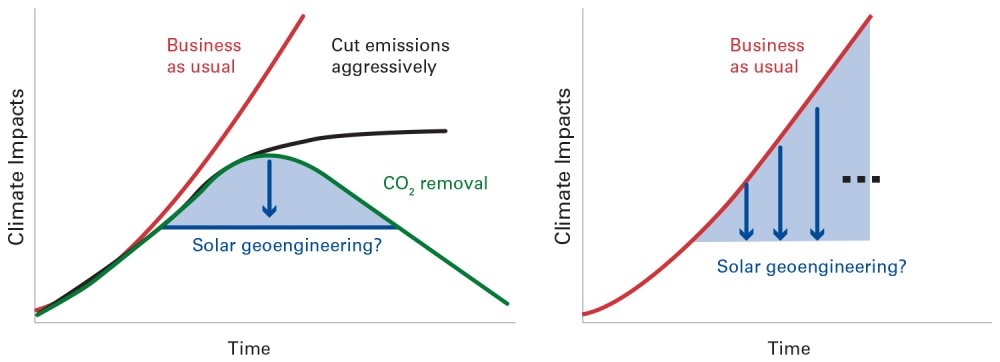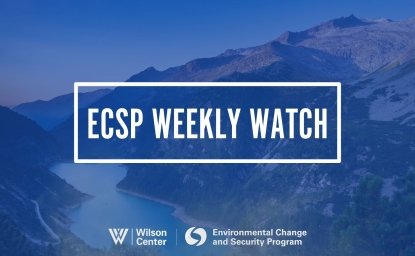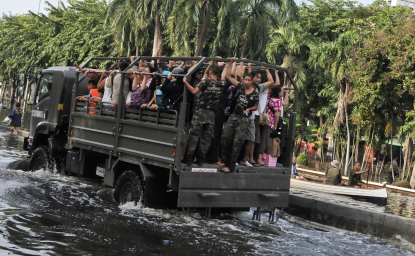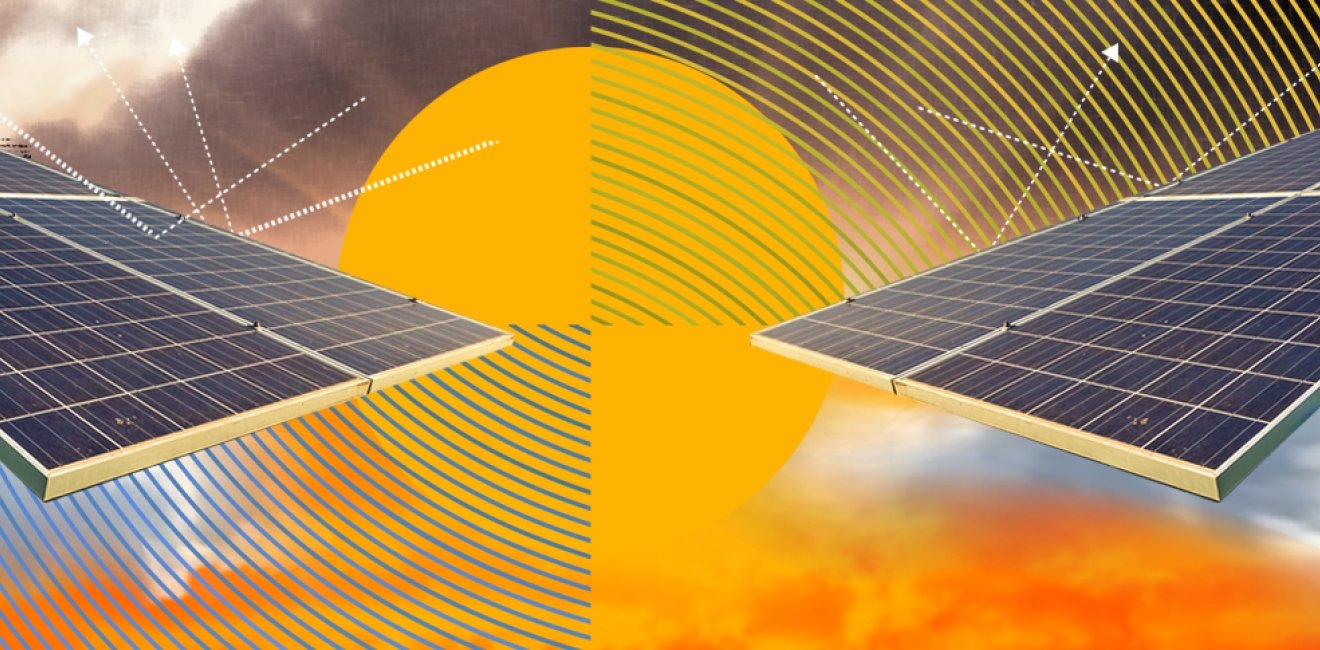Solar radiation management (SRM) is an idea born of desperation. It is also an idea that demands consideration as the global community grapples with an ongoing and accelerating climate crisis. This briefing note defines and describes SRM, discusses why SRM is under consideration by the scientific community, policy actors, and representatives of civil society, and looks at what effective governance of SRM requires. SRM raises big questions for the foreign policy community: Should SRM technologies be developed? Should they ever be used? Who decides based on what kinds of imperatives or criteria? Who would have control of operation and intended outcomes? This note makes the case that even though SRM approaches are still at the discussion stage, the building of a governance architecture around SRM should begin now.
SRM is a speculative form of climate change response. SRM schemes, should they ever be developed and used, would operate by reflecting some amount of incoming solar energy back into space before that energy can be trapped by the gases that produce the greenhouse effect. Think of SRM like a reflective shield, artificially providing regional or global cooling.
Setting aside for the moment potential negative or unintended consequences, increasing the reflectivity of planetary features at any altitude could achieve the cooling goal of SRM. At ground and sea level, SRM proposals have included using gigantic pumps to introduce microbubbles into reservoirs or other bodies of still water, the genetic engineering of crops to make leaves shinier, and the spreading of reflective films on the ocean’s surface or on vulnerable ice flows. The two most-discussed proposals for SRM, outlined in the next section, are both options that would operate up in the atmosphere. Any of these options would increase what is known as the Earth’s “albedo”—the reflectiveness of the planet—sending more solar radiation back into space before it can interact with greenhouse gases.[1]

The emerging science and technology of SRM is complicated enough. SRM is not, though, just a technical enterprise. It’s a big complex entanglement of technological and scientific ideas, promises, and understandings interacting with social forces and actions. Some see technological developments as a way to bypass messy political processes. That’s not really the case. SRM is not a way to get around climate politics; SRM is part of climate and broader politics. Consideration of SRM will necessarily take place in the context of the rest of the global effort to understand and respond to climate change. With this in mind, the world will be better placed in 2040 and beyond to take action if investment in how to govern SRM is well underway in 2020. SRM has world-altering potential. Its governance needs to be early, anticipatory, and flexibly attentive to the range of different possibilities that lie just over the horizon.
Current SRM Proposals
Ground-level SRM options such as more reflective crops or white roofs on buildings could provide some localized cooling and, if implemented at a large enough scale across multiple locations, could even have a modest impact on global heating. Higher-leverage proposals that could more readily produce regional or global cooling would operate in the atmosphere. Marine cloud brightening would involve introducing saltwater particles from the ocean up into the cloud layer, with the hope that this would lead to the short-term appearance of new and whiter clouds. These artificial or newly whitened marine clouds would mimic the “ship tracks” that appear above ocean-traveling ships. In Australia, marine cloud brightening is one of more than 40 proposals being looked at as part of an AU$150 million government-backed research enterprise aimed at reducing heat impacts on the Great Barrier Reef. A trial in early 2020 used a modified turbine with hundreds of nozzles to spray salt crystals skyward as a proof of a potential particle delivery system. Future tests are planned to test atmospheric and ocean surface impacts. A project based in Washington state has set out its own research plan and is seeking US$40-50 million over five years.
A second proposal, stratospheric aerosol injection, would involve throwing reflective particles into the upper atmosphere. The particle might be sulfur dioxide, or, in some formulations, calcium carbonate or perhaps an engineered nanoparticle, with delivery most likely by a fleet of high-flying aircraft. This activity would replicate the cooling effect of a volcanic event. The eruption of Mount Pinatubo in the Philippines in 1991 produced a plume of gas containing some 20 million tons of sulfur dioxide, some of which was forced to high altitudes. The Earth’s average temperature fell by around 0.5 degrees Celsius for the 18 months that the sulfur dioxide particles remained aloft[2]. A team at Harvard University has begun early-stage investigations that could, in time, inform whether humans could replicate such a feat.
One paper has suggested that a program that would ramp up to a cooling impact of around 0.3 degrees Celsius could be achieved for about US$2.25 billion per year over an imagined 15 year lifespan.[3] This kind of price tag makes stratospheric aerosol injection look a good bet in brute economic terms. Such cost estimates are scrambled, though, when one tries to take account of unintended or potential downside consequences. Working out whether any SRM proposal is a good idea is dependent not just on feasibility and direct cost estimates, but also on questions about whether and how any deployment can be governed, how costs and benefits are likely to be distributed, and what SRM development would mean for other needed efforts to respond to climate change.
Stratospheric aerosol injection would, if utilized, have a global cooling effect, though computer modeling suggests it would not impact all places in the same way. Optimistic forecasts based on limited and carefully controlled deployment of stratospheric aerosols suggest that every region of the world would see some climate benefit, with some regions seeing more benefit than others. Other forecasts, however, suggest that this kind of SRM could upset rainfall patterns, amplify or change seasonal cycles, deplete stratospheric ozone, and potentially harm biodiversity. Much would depend on the particular kind of aerosols deployed, what quantities are used, where they’re deposited, and over what timeframe. Marine cloud brightening, by contrast, could have regional application to slow Arctic sea ice melt or protect against coral bleaching. Small-scale ground level SRM efforts could be deployed entirely within one country, while atmospheric approaches would depend upon—or would spill over to—the atmospheric commons. This is all to say that while SRM approaches have in common that they would reflect solar radiation, there are some big and important differences in terms of what various SRM approaches entail and require in governance terms.

Why is Solar Radiation Management on the Table?
SRM could offer, by one well-known formulation, a “fast, cheap, and imperfect” approach to slowing or offsetting temperature rise caused by greenhouse gas emissions. SRM is fast in the sense that deployment of an SRM approach would begin working immediately to reduce temperatures and it is cheap by the measure of anticipated direct costs.[4] SRM is also imperfect, though, in that it does very little to address the underlying problem of the buildup of greenhouse gases in the atmosphere (or in the oceans, where atmospheric CO2 is driving ocean acidification) and comes with a range of attendant risks.
Said differently, SRM is under consideration by scientists and policymakers because there is very little scientific doubt that using SRM approaches would cool particular regions or the planet. Climate change is about far more than temperature increase, however, and the cooling would come with a range of challenges and downside risks.
If SRM is to be used, it must be utilized alongside traditional emissions abatement (mitigation), adaptation to climate change effects, and, perhaps, carbon removal (see Box 1 and Figure 2). This is a key punchline when it comes to SRM: SRM should only be considered a supplement to emissions abatement, never a substitute. In the formulation in the left-hand portion of Figure 2 below (borrowed with permission from this paper), SRM is used in a “peak shaving” fashion, to remove the peak from a climate damage curve for a period of time. This could buy time for emissions abatement and then the removal of CO2 from the atmosphere using large-scale carbon removal schemes (also a speculative notion) to stabilize and ultimately reduce atmospheric greenhouse gas concentrations. SRM in this scenario would be gradually ramped up through time and then gradually phased out, with the length of time and maximum scale of deployment depending on a range of different factors. In the right-hand portion of the figure, by contrast, SRM is used all by itself in an effort to keep climate impacts under control. In such a scenario SRM would need to be ramped up to keep pace with rising concentrations of greenhouse gases in the atmosphere, with the downside that higher concentrations of SRM entail more risk.

SRM has made it onto the international climate policy agenda, though it remains contentious. In 2019, a proposed resolution on “Geoengineering and its governance” was advanced for consideration at the 4th United Nations Environment Assembly (UNEA-4) in Nairobi. The proposal called for a report or series of reports to be prepared by the United Nations Environment Programme (UNEP), assessing criteria to define SRM and carbon removal approaches, the state of existing science, and governance considerations. The proposal was ultimately withdrawn, in part because the U.S. delegation wanted to forestall any opportunity for international processes to impose restrictions on the kinds of research that might be pursued in the United States (see here). The formal governance of SRM will likely be back on the agenda at UNEA-5 and in other upcoming fora.
Governing Solar Radiation Management
What, then, does governing SRM require? Governing SRM means steering between the good that could come from developing and utilizing SRM options and the potential hazards and harms that SRM options present. Governance in a case like this one is not just about trying to protect against risks. Focusing just on the worst-case scenarios for SRM gone awry or terrible uses of SRM approaches by the worst imaginable actors leads one immediately to demands for a moratorium or strict restrictions on even SRM research efforts. An evaluation of SRM governance needs to start with comparing the potential risks and benefits of SRM approaches with the risks associated with climate change trajectories absent the availability of SRM. That is, could SRM provide a good and manageable way to offset some climate change risks? The truth is that we, collectively, don’t yet know enough about SRM either in scientific or societal terms. We haven’t yet sorted through whether SRM approaches could work, as models and early tests suggest they might; nor is it clear that people would accept SRM options and that governments and others could establish the rules and institutions needed to manage them. This means that, in addition to managing for risks and potential harms, effective governance of SRM is also about creating an appropriate enabling environment for critical, quality research; opening up space for the kinds of societal deliberations that need to be undertaken; and establishing transparency and information sharing mechanisms (see Box 2).
Right now, SRM is still an idea. There is some computer modeling and a handful of plans for early-stage scientific investigation into the efficacy of certain aspects of some SRM proposals, but there are no readily deployable SRM options. This means that in the near-term, governance of SRM means governance of SRM research. But even the mere mention of SRM research has garnered objections. Among the concerns (see also box 3 in this report):
- SRM could be sold by fossil fuel interests and others as a kind of get-out-of-jail-free card;
- SRM might distract elites or society from the essential work of emissions abatement;
- SRM could experience a kind of technological lock-in or elite capture, where early stage research efforts would drive inexorably towards use even if it proved a bad idea; and,
- Even medium to large-scale testing of some forms of SRM would amount to messing with ecosystems, with very limited knowledge and ability to control and account for the impacts of such interventions.
Yet, quashing research denies us the opportunity to better understand a potentially beneficial tool and prevents informed decision-making—including baseline knowledge about potential risks—which is an especially important consideration should a group ever decide to rush to SRM deployment.
When it comes to potential deployment of SRM approaches, much depends on the particular kinds of SRM under consideration. A stratospheric aerosol injection program, for instance, would have global climatological impacts but could be launched by a single country or even a sub-state actor. This could not be a covert undertaking. Other countries would certainly notice if, say, China or Russia or the United States launched (in a deployment scenario) thousands of flights each year into the stratosphere, and satellite-based LIDAR could detect major engineered changes in planetary reflectivity. Still, the fact that one country could go it alone suggests the need for coordinated action, even if only to ward off the potential for rogue actions.
Another much-discussed challenge with a global stratospheric aerosol injection deployment is the so-called “termination shock” that could accompany a sudden cessation of activities. If a global SRM scheme were implemented while greenhouse gas concentrations continued to rise, then all that SRM would be doing is masking and suppressing potential warming. A sudden halt of the SRM scheme would result in a sudden, and potentially severe, pulse of warming. All of this suggests that SRM with global impacts would need to be managed effectively and without interruption for a potentially very long time.
A regional or local SRM approach, such as marine cloud brightening or the spreading of ocean films, has different implications. Such programs would infiltrate the global commons and have spillover impacts on neighboring states, but risks would likely be more geographically constrained than with global approaches.
A further consideration, of particular importance for foreign policy discussions, concerns security or securitization dimensions of SRM. While some have speculated that stratospheric aerosol injection might be weaponized, this is likely an overblown concern. More pressing is that costs and benefits of SRM deployment would be unevenly distributed. Even models that suggest that nearly everyone would benefit from SRM indicate that benefits would be spread unevenly. These kinds of equity concerns could have implications for vulnerability to climatic pressures, including pressure points for migration, and public acceptance of SRM developments.
Another security implication has to do with how SRM could shape public and elite understandings of climate change. Climate change is now a diffuse challenge, in the sense that every person on the planet contributes to climate change through their actions (recognizing that some contribute significantly more than others and focusing individuals as the producers of climate change lets corporations and flawed systems off the hook). SRM could potentially provide a touchpoint by which a particular actor is identified (correctly or not) as the source of climatological effects. Suppose that Pakistan were to experience a major flooding event the year after India announced field tests of an SRM approach (given as an example in this discussion of the "Oxford Principles" for geoengineering governance). Pakistan could blame India for the flooding whether or not a direct causal impact could be uncovered. In this way SRM would exacerbate and feed into existing interstate tensions. Some have gone so far as to suggest that SRM feeds a militarization of climate politics, intensifying a logic of surveillance and control, in ways that could undermine cooperative climate response efforts.
Looking Ahead – Prospects for Solar Radiation Management and its Governance
Imagine the world in 2040. The ice sheets covering Greenland are sliding more rapidly into the ocean even as much of the world is experiencing massive fires. Climate-induced migration and global food system disruptions are increasing. Decision-makers and communities all over the world are finally aligned to do something about climate change. Climate change is acutely felt and the need to address it, urgent. Where does SRM fit in?
- Scenario 1: There has been limited research on SRM to this point, but things are getting so drastic that every tool needs to be used. Fly the planes.
- Scenario 2: Research has shown SRM to be good in certain respects but bad in others. Keep SRM local and avoid risks associated with global options. Brighten the clouds.
- Scenario 3: The world has taken a back-to-nature swing and there’s widespread antipathy towards technological responses. Shelve the plans.
- Scenario 4: Jeff Bezos decides he’s going to sidestep all the talk and get the SRM job done himself. Anoint the savior.
- Scenario 5: Governments have directed a multi-year coordinated research effort around stratospheric aerosol injection and have agreed upon rules to guide large-scale outdoor experimentation. Proceed with caution.
These scenarios begin just to hint at the array of possible futures into which SRM will fit and that consideration of SRM will help to create. Bottom line: though potential use of SRM is some way off in the future, SRM demands consideration now. How decision-makers answer the “where does SRM fit” question today will go a long way towards producing which of the paths outlined above, or others, we find ourselves on in 15-20 years.
Box 1
The Language of Geoengineering, Carbon Removal, and Solar Radiation Management
The term geoengineering (or climate engineering) has long been used as a catch-all for any potential large-scale technological intervention in earth systems to tackle or address climate change. The term has, though, largely fallen out of favor. Instead, scientific and policy discussions tend now to distinguish more carefully between two distinct types of potential large-scale climate intervention:
- Carbon removal (or carbon dioxide removal or negative emissions technologies) approaches could draw carbon dioxide from the atmosphere and direct the carbon dioxide to long-term storage or to beneficial use. Climate models now suggest large-scale carbon removal will be a necessary component of the global climate change response. Biological pathways for carbon removal include the planting of trees, the managing of farmlands for carbon uptake and storage, or, perhaps, depositing iron filings in the ocean to promote blooms of carbon-inhaling phytoplankton. More speculative chemical and technological methods include direct air capture (capturing carbon dioxide directly from the open air and then injecting it underground) and enhanced weathering (speeding up the natural processes that turn atmospheric carbon into rock formations).
- Solar radiation management (or solar geoengineering or solar radiation modification or albedo modification) could cool the planet by reflecting or refracting a small amount of incoming solar energy. Proposals include stratospheric aerosol injection, marine cloud brightening, or ground-level albedo enhancement. This briefing note focuses on the science and governance requirements of solar radiation management approaches.
Carbon removal and solar radiation management offer different and perhaps complementary ways to tackle climate change, in conjunction with reducing greenhouse gas emissions and adapting to a changing climate.
Box 2
Limited and Fragmented Formal Governance of SRM
At present, there is no single present or planned international regime that has taken up the governance of SRM. There exists, instead, a patchwork of relevant rules and a range of different proposals.
There have been, to date, three international environmental regimes that have given explicit attention to SRM. These are:
- The Convention on Biological Diversity (CBD): The parties to the CBD adopted decisions in 2010 and 2012 motivated by concern about potential negative impacts on biodiversity from climate-related geoengineering activities. Some have argued that the CBD decisions represent a de facto moratorium against SRM investigation or deployment. The decisions, though, are guidance rather than binding law, and they also explicitly call for and allow for various kinds of research activities attentive to and designed to help assess environmental risks associated with SRM.
- The London Convention and London Protocol (LC/LP): The LC/LP establishes a regime covering the dumping of materials into the oceans. In 2010, parties to the LC/LP adopted a resolution on an “Assessment Framework for Scientific Research Involving Ocean Fertilization.” The assessment framework is designed to provide guidance on the monitoring of ocean iron fertilization experiments, which could remove carbon dioxide from the atmosphere. Ocean iron fertilization and SRM have often been brought together under the “geoengineering” umbrella, such that many read the LC/LP guidance as also applying to SRM approaches that involve putting materials into the oceans. In 2013, amendments were adopted designed to regulate marine geoengineering activities, where marine geoengineering was defined as “a deliberate intervention in the marine environment to manipulate natural processes, including to counteract anthropogenic climate change and/or its impacts, and that has the potential to result in deleterious effects, especially where those effects may be widespread, long-lasting or severe.” These amendments have not entered into force.
- The Vienna Convention and Montreal Protocol: The parties to this regime to address human harms to the stratospheric ozone layer have taken some interest in SRM. This is because there is some concern that stratospheric aerosol injection, a type of SRM, could harm the ozone layer. Over recent meetings there has been a growing push to include consideration of SRM in an upcoming scientific assessment. It is unclear at this juncture whether this scientific interest might lead to an interest in rulemaking.
In addition, there are a number of other environmental regimes that could have bearing on SRM based on existing treaty language or mandate. Among these regimes is the Convention on Long-range Transboundary Air Pollution (perhaps relevant in the case of the spread of sulfate aerosols or some other particle in the atmosphere), the UN Convention on the Law of the Sea (perhaps pertinent in the case of positive or negative marine impacts from SRM testing or deployment), and the Environmental Modification Treaty (ENMOD) – perhaps relevant if some particular use of SRM were deemed or seen as hostile.
A study published in 2020 by Susan Biniaz and Daniel Bodansky concluded that there is no obvious “one-stop shop” for SRM governance. The international climate change regime, with the UN Framework Convention on Climate Change at its heart, is an obvious place to site formal governance of SRM, but the authors contend that the agenda for parties to that convention is already packed and contentious. Nor is there another obvious international forum with sufficient scope and mandate. Biniaz and Bodansky instead weigh a range of potential existing institutions or regimes that could pick up important pieces of the SRM governance agenda: the Intergovernmental Panel on Climate Change, World Meteorological Organization, or similar for scientific assessment, and the UN Security Council or G7/G20 or a regional forum for policy decisions. Others have endorsed this polycentric or multi-nodal governance notion. SRM governance is needed. SRM governance does not, though, all need to be handled in one place, and for the foreseeable future fragmented governance of SRM is likely to remain the norm.
Footnotes
[1] The fact that increasing albedo or planetary brightness at any altitude would cool the planet has to do with the manner in which solar energy interacts with greenhouse gases in the atmosphere. Incoming solar radiation enters the Earth’s atmosphere in short wavelengths. Some incoming shortwave radiation is reflected back into space by the cloud layer or particles in the atmosphere. Some makes it through to the Earth’s surface, where it is absorbed and then re-radiated spaceward as longwave radiation. It is this outgoing longwave radiation that is trapped by greenhouse gases in the lower atmosphere, with increasing concentrations of greenhouse gases then leading to more planetary warming. Solar radiation management (SRM) has the potential to offset some human-induced warming by reflecting solar energy back into space before that energy becomes the longwave infrared radiation that can be captured by greenhouse gases.
[2] This figure of 0.5 degrees Celsius is notable, given that the atmosphere has warmed a little more than 1 degree since the beginning of the Industrial Revolution and the goal of the Paris Agreement is to limit warming to no more than 2 degrees of warming above pre-industrial averages, aiming to limit warming to 1.5 degrees.
[3] These cost estimates include aircraft development and production expenses spread across the fifteen-year life of the imagined program.
[4] Note that this is an estimate of direct costs, and does not take account of potential indirect costs such as foreseeable or unforeseeable environmental disruption.
Author

Environmental Change and Security Program
The Environmental Change and Security Program (ECSP) explores the connections between environmental change, health, and population dynamics and their links to conflict, human insecurity, and foreign policy. Read more

Explore More
Browse Insights & Analysis
Can Climate-Resilient Agriculture Become an Engine for Syria’s Post-Conflict Recovery?

ECSP Weekly Watch | March 10 – 14

ECSP Weekly Watch | February 17 – 21



